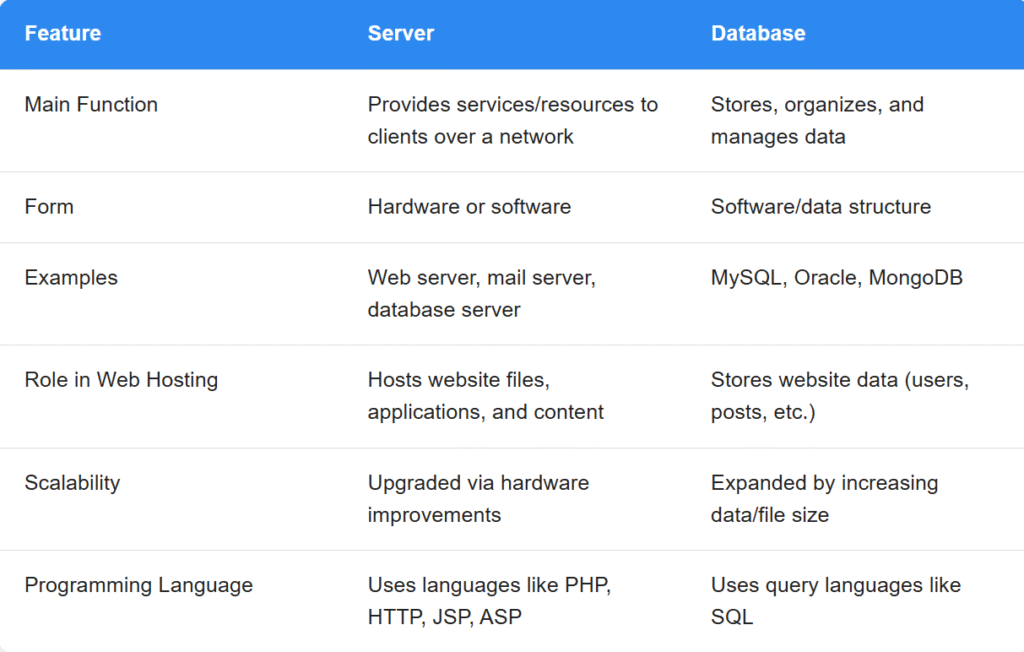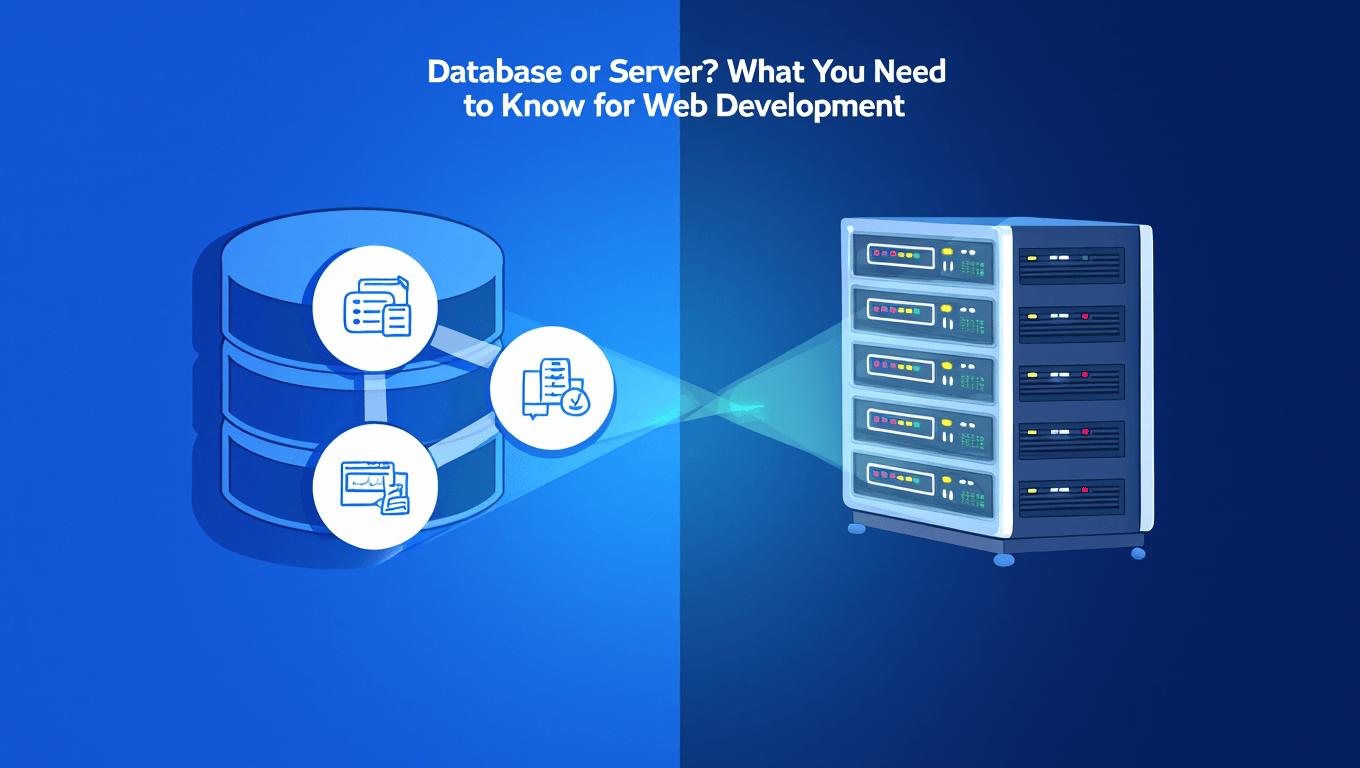In technology, the terms database and server are used a lot together, and sometimes they are even used interchangeably. However, these terms mean different things and represent different roles in computing and the web space, although they are related and complementary. In this blog we’ll explore what both of these terms mean, how they relate to each other, and why knowing the difference is important.
What is a server?
Essentially, a server is a physical machine (hardware) or a software program that serves up services or resources for other computers (called clients) usually over a network. There are many different types of servers to perform many different types of roles such as host websites, manage email, store files, etc. Essentially, a server receives requests from a client and processes the request to serve the requested resource or service back to the client.
Types of Servers
Web Server: Serves web pages upon request.
Mail Server: Sends and receives mail and manages incoming/outgoing mail and other processes.
Database Server: Handles requests to process a database.
File Server: Stores files and handles requests to keep everyone’s documents for networked users.
Servers are powerful computers that require hardware that has high performance specifications because they typically run 24/7 every day of the year and will have a lot of users (options) requesting services at the same time.
What is a database?
A database is an organized collection of information that is stored and accessed by a computer. Databases allow us to efficiently store, retrieve, change, and manage data. The data can be as simple as a list of names or as complex as the data backbone of a global organization.
Types of databases :-
Relational Databases: Tough on data stored in a table (e.g., MySQL, PostgreSQL).
NoSQL Formats: Store unstructured data (e.g., MongoDB).
Cloud Databases: Hosted in the cloud, where the database is managed.
The software that provides data management is called a Database Management System (DBMS). Examples include: Oracle, Microsoft SQL Server, MySQL.
How Are They Different?

A server is platform or environment that provides services, while a database is specifically used for storing and managing data. While a server can house many services (which can include databases), a database does not offer any network services on its own—it merely serves as a repository for data.
Applications of Servers
Web Hosting :- Web or web servers store, or host, web pages, and deliver the HTML, CSS, and JavaScript files to the user’s browser when requested.
Email services :- Mail servers store, send, and receive email messages.
File storage and sharing :- File services allow many different users the ability to store, access, or share files to everyone on the network.
Gaming :- Game services enable multiplayer games, and allow all players to sync data, real-time or near-time, and enable a constant source of data updates to players.
Streaming media :- Media servers deliver on demand audio and video streams (like on YouTube or Spotify).
Applications of Databases
Retail :- Databases store transactional data, current store hours and location, consumer data, and much more.
Transportation :- Databases store customer transportation needs, logistical information, rate quotes, time, and even expenses if requested.
Travel :- Databases store people, accommadations, services, and expense information.
Insurance :- Databases store many types of incidents, claims documents, details, and personal data.
Online Banking :- Databases are developing mobile applications which need to access records and use transactional data versus loans in many installing and tracking systems.
Explore more tech updates here → Click here


1 thought on “Database or Server? What You Need to Know for Web Development”